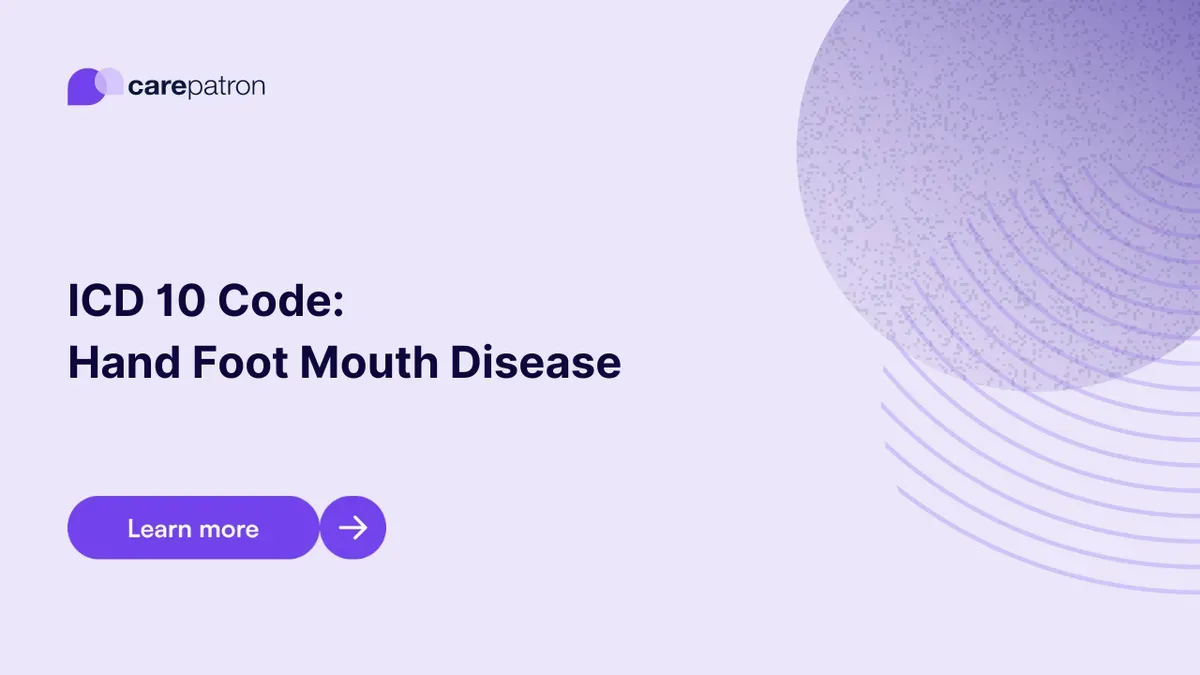
Hand Foot Mouth Disease ICD-10-CM Codes | 2023
Read this short guide to learn about Hand Foot Mouth Disease ICD codes you can use!
Use Code
Commonly asked questions
It spreads when an infected person sneezes or coughs. Those who come into contact with an infected person’s saliva or the particles they sneeze or cough will likely be infected.
Touching anything that the infected person touches will put the person at risk of being infected. Direct contact with their blisters can also put one at risk of infection.
Most of the time, no. Hand-foot-and-mouth disease is considered a mild disease, and it usually goes away in a week. We say “most of the time” because there are rare instances of Encephalitis and Meningitis emerging because of the disease.
This disease resolves on its own, but healthcare professionals will recommend taking over-the-counter pain relievers, hydrating, resting, and using calamine lotion or certain ointments to lessen the itching and heal broken skin caused by the rashes and blisters.
EHR and practice management software
Get started for free
*No credit card required
Free
$0/usd
Unlimited clients
Telehealth
1GB of storage
Client portal text
Automated billing and online payments
